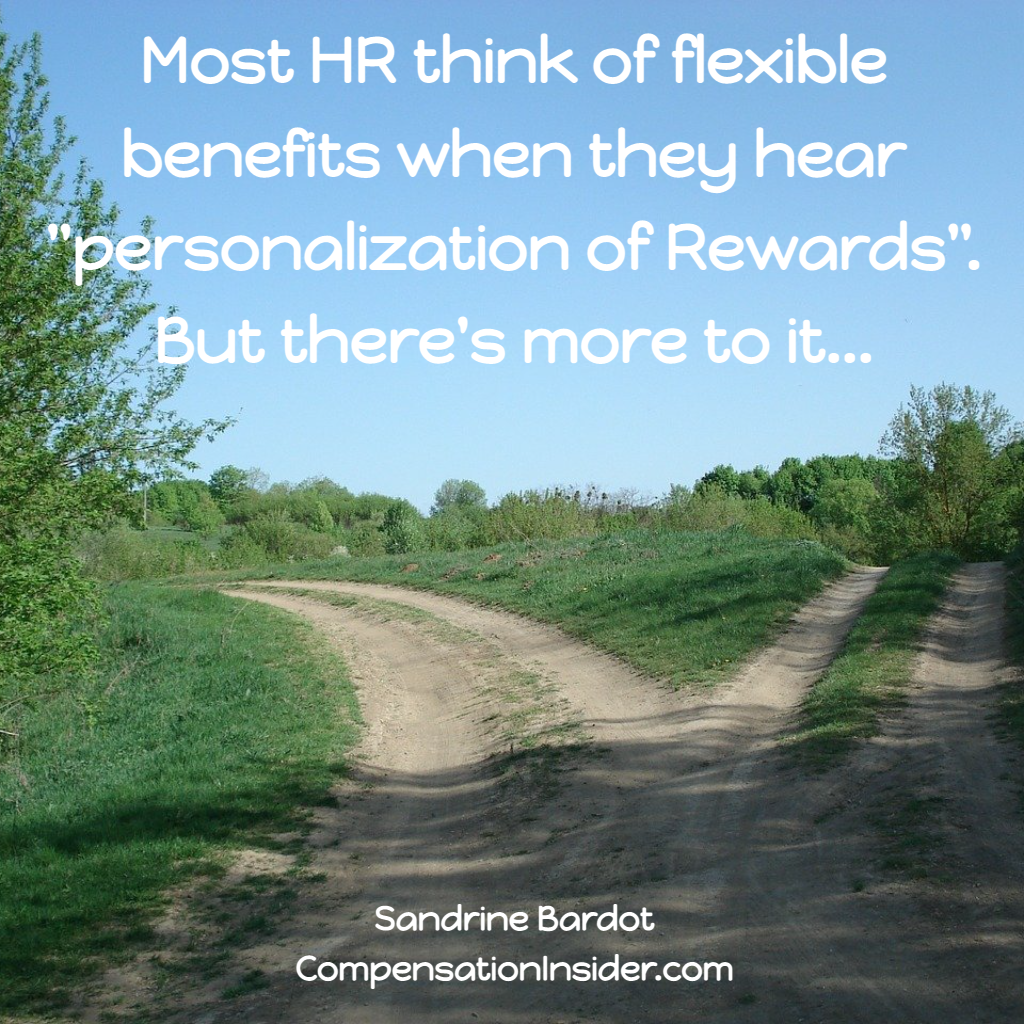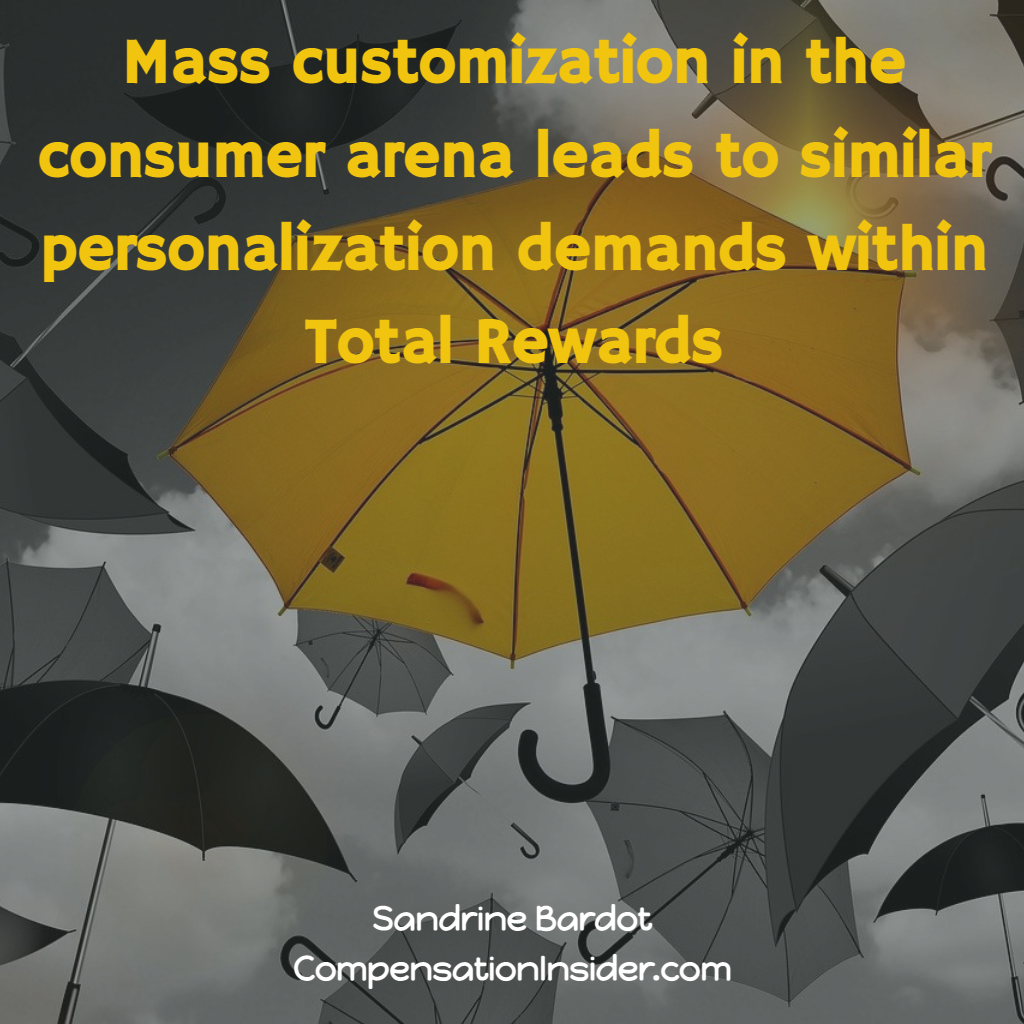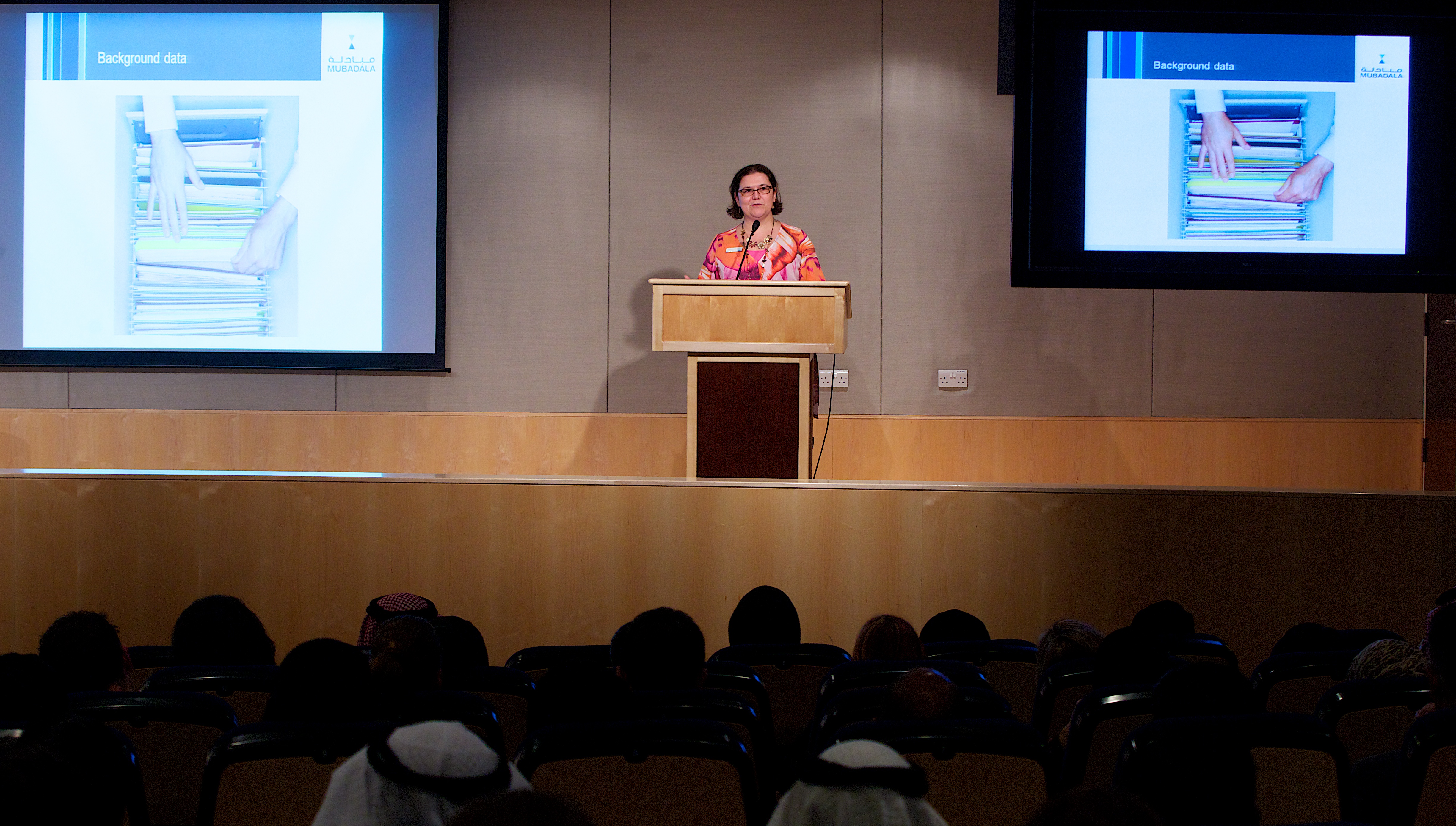SUMMARY
- With so much customization available in our lives as consumers, we now expect a similar level of personalization in our work lives, and that includes in the way the whole employee package is built.
- Are you offering any personalization in the packages for your employees ? In this episode, discover different elements where you can allow flexibility !
- If you’re ready to start personalizing the Total Rewards approach at your company, it’s time to start figuring out employee preferences !
- Watch the video to get the full training or read the transcript below.
Related posts
The digitalisation of HR – are your systems in the 21st century yet ?
Digitalisation of HR : moving toward a consumer-style experience ?
INSPIRATIONAL QUOTES



FULL TRANSCRIPT
Hello, and welcome to this episode of Compensation Insider. Today, I would like to talk to you about the personalization of Rewards. What we’re seeing nowadays is a movement which started thanks to, I think, digitalization, and the possibility of having mass customization in the consumer sector.
Mass customization in the consumer arena leads to similar personalization demands within Total Rewards
Think about it. How do we behave nowadays? Online, we expect a lot of instant feedback, that we give and that we receive.
When we go to a restaurant, we can leave a review on Yelp. Whenever we have a delivery, we’re asked to give a review. If we buy a service, we also have to give a review. And we read reviews before we book a vacation place, a rental, or anything like that.
There’s a lot more transparency nowadays than there used to be. Informal communities that are formed on social media, but also offline in the real world, are being used as the backbone for a more customized experience. People now can be in touch with other people who have the same hobbies, the same likes as they do, even if those other people are far away.
30 years ago, that was not possible. But if I’m into, I don’t know, underwater basket weaving, I might find somebody in a country on the other side of the world who also likes it, while in my own town, there might be nobody who has that kind of hobby.
We also, of course, expect to have an always-on access to everything, especially thanks to the mobile phone. So mobility and the always-on access is something which is much expected.
Another aspect of current consumerization is mass customization. Nowadays, it’s very easy to buy a t-shirt which we customize. We can customize our cars, which was not really possible many years ago. I mean, there were a few options, but nowadays there are some cars that are fully, fully customizable. In particular, I remember there was a version of the Mini Cooper that was so customizable (millions of possible combinations) that there was very little chance that you would see somebody having the exact same model of that car as you do.
However, what we see is that enterprise systems in the workplace, so all the CRMs and the employee systems, the enterprise systems that we use such as in customer service, finance, logistics, and so on, have much remained in the mid ’80s. They’re not user friendly.
The first step is to ask your employees for their preference
Within HR, I want to show you a few examples of what we can do in order to get into more of that personalization, which I think is really a heavy trend, and which is going to become more and more demanded by employees.
So first, how do you get there? I think the best way is to ask employees what they want.
You can perform employee surveys. Those can be the traditional employee surveys when you tell people, “Okay, tell us in this list which are the things that you would prefer for us to implement.” And then you can go for that.
Nowadays, there are also ways of surveying employees that are more similar to what is done in the consumer goods industry, like asking people to choose between two different elements to really see where the preference goes, and so on.
Once you have the results, you can apply segmentation to them. In traditional segmentation approaches, you would differentiate between by gender, or maybe staff and management, or maybe sales versus non-sales.
You can also look by generation, you can look by tenure in the company, and so on, to try and see if you find some kind of groups of people who have some commonality in what would be a good for them in their opinion in terms of the choices that you can offer as an organization.
Personalizing Total Rewards
I want to give you some examples of how you can personalize a total rewards package in your own organization.
Flexible benefits
For most people, when they hear “personalization of rewards”, they first think of flexible benefits.
This has been around for a few years in some parts of the world. So, that’s where, for example, you have a core package of benefits that you offer to all employees, and then you give them a choice. For instance, within your health care cover, do you want to have more dental, or more optic cover, or things like that?
We see also personalization coming into everything that has to do with pension or savings plans, where people can choose the kind of investment which is made, the profile of risk. They can choose the amount that they contribute. They can do additional voluntary contributions. So the pension/savings plan is more customized to their needs.
Employee Assistance Programs
EAPs also are a good way to personalize total rewards, because basically, it’s often a bouquet of services that are offered by the employer through third party providers. Employees can use those as they need.
They might need somebody to give them some kind of legal advice, because they want to prepare a will, or there is an inheritance coming, or there’s a divorce, or something like that.
They can try to get second medical opinion, they can get psychological support, or anything like that when they need, and that’s offered as part of the package, which employees can use in an anonymous manner. That’s a great way to really tailor their usage to their specific needs.
Employee recognition schemes
Another area where we see customization and personalization is of course the employee recognition space, where we see more and more peer-to-peer recognition.
We see systems that allow the team to create specific badges for their own project. You see informal communities springing up, providing instant feedback on each other’s walls, and so on.
Communication is not just coming from the top down, from management to the employees, or sometimes bottom up, when you have some kind of formalized survey or focus group, but also peer to peer, and in a way where people can come together and bond as and when needed.
Working conditions
With COVID, we’ve also seen personalization which I think is going to become more permanent in terms of the flexible working conditions that companies can offer. A permanent option to work from home, or a hybrid model where you have regional hubs instead of one just big headquarter, and people can go and work there whenever they want.
Other options are flexible working days, flexible working hours, and part-time work, which is not yet very strong in the GCC, but should definitely, I think, be considered.
Package composition
And I want to finish by an example that I read about. I don’t know exactly which companies are doing that. There’s a European company, and what they’re doing is that they’re offering flexibility in the package itself. During the recruitment process, they’re experimenting with offering some alternatives.
So for example, they might say, “Okay, dear future employee, we would like to offer you a choice. Would you like to receive 5% more on your annual guaranteed base pay, or 10% additional on the upside in your own target bonus? So, for example, instead of having a bonus target at 10%, we might offer you 20%.” They might also say, “Or do you prefer 5% more base pay or 13 extra days off per year?”. That allows the candidate to customize that package based on what they feel is better for them.
I think organizations should definitely consider doing things like that. It’s not an extra cost, it’s actually built into your package. You say, “Okay, overall my cost is going to be X. If I take out a portion of that, how can a candidate value it? So, do I give it with certainty in the base pay, or do I give more in the variable pay with an upside ? Or do I offer a choice between more on the base pay, or more in terms of days off?”
The future is coming
If you look around, we’re going to see more and more of that personalization in Total Rewards. We see this trend already happening in Learning and Development, for example, where employees can attend online classes. They are offered the subscription, for example, to a learning management system where they can access 10’s, or even 100’s of trainings, and they can pick and choose whichever one they want to follow, and so on.
So, we already see that customization other aspects of HR, and I think that is going to come and continue to grow in the Total Rewards space.
I hope you enjoyed this episode. If you have some examples to share, I would be very happy to learn about them. So, don’t hesitate, leave a comment, and follow me, and I will see you next week. Thank you.



Speak Your Mind